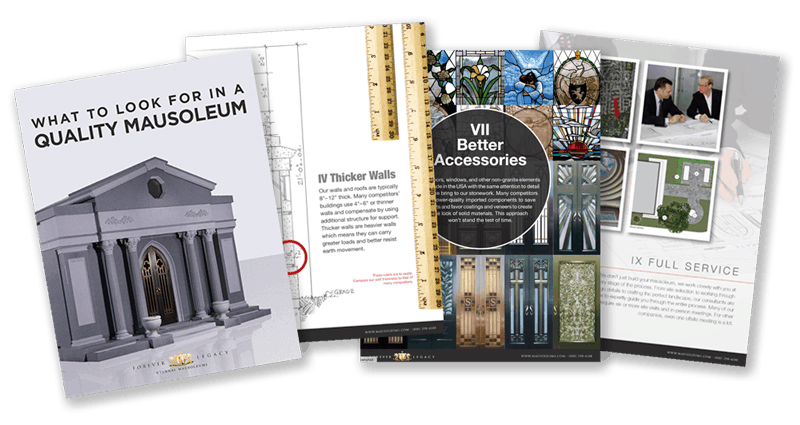Getty Mausoleum
Modern
According to the Commission on Chicago Historical and Architectural Landmarks, this delicately ornamented little cube, designed in 1890, by Louis Sullivan, marks “…the beginning of modern architecture in America.” Never mind that the purpose of the building is to house dead bodies. The statement certainly is a heavy weight for such a small building to bear. Upon closer inspection it can be seen that Sullivan did indeed invent a new, based not on classical architecture, but on his own ideas.
Sullivan’s limestone cube combined strong geometric mass with exquisitely sculpted ornament. Although a century of wear has affected some of the finer etchings, the basics of the design remain. Sullivan kept the bottom half of the mausoleum smooth, which serves as a foil for the maze of octagons. Stars, heralding the ubiquitous star-burst designs which would appear in the 1950’s, are set into each of the octagons. The bands around the door and windows alternate between smooth and ornamented.
Although critics will always debate which architect and which building signaled the beginning of modern architecture, no one disputes that Sullivan was charting new ground in architectural design.
Henry Harrison Getty was a partner in the lumber business with Martin Ryerson. Getty knew of Sullivan’s work from the design Sullivan created for Ryerson’s mausoleum. Getty commissioned Sullivan to design this mausoleum for his wife Carrie Eliza Getty, who died in 1890. Henry lived until 1919 and is entombed along with Carrie and their only child, Alice, who died in 1946.
Text and photo © Douglas Keister Visit Doug’s Author Page
[address cemetery=”Graceland Cemetery” street=”4001 North Clark Street” city=”Chicago” state=”Illinois” zip=”60613″]

